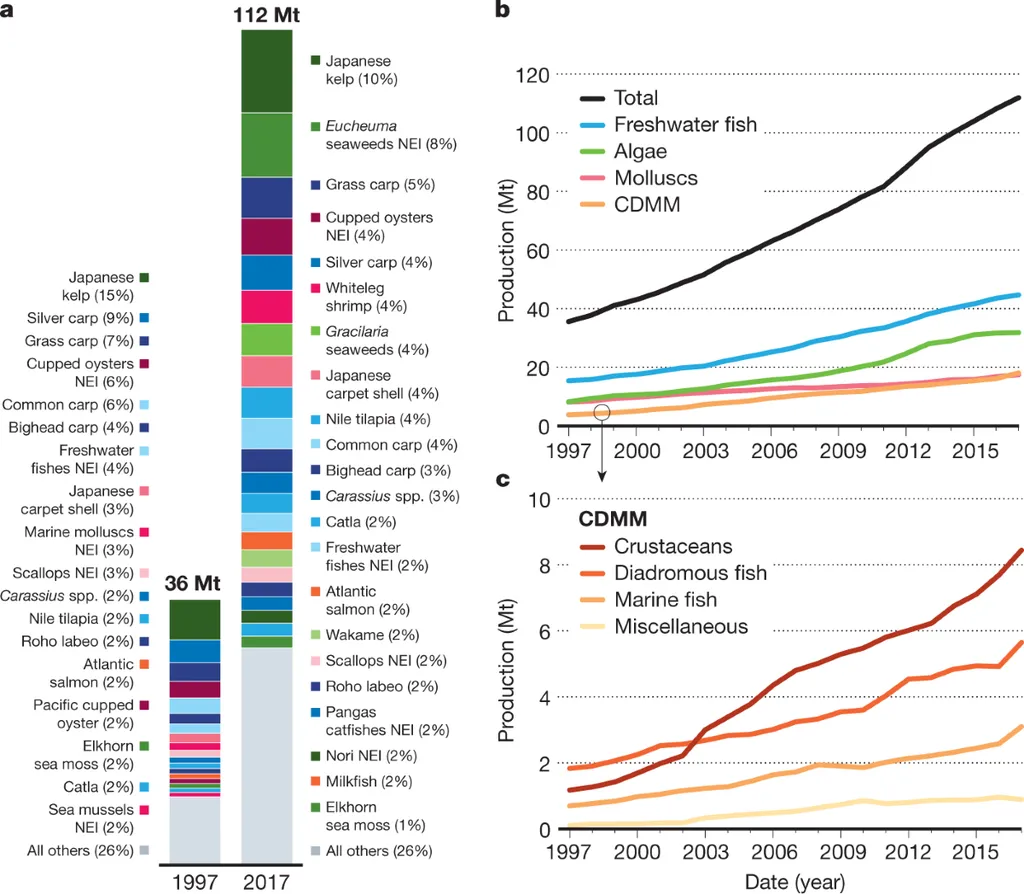In the vast and vital world of aquaculture, a new study is making waves, promising to reshape how we understand and utilize aquatic germplasm resources. Published in *Progress in Fishery Sciences*, the research, led by WANG Na of the State Key Laboratory of Mariculture Biobreeding and Sustainable Goods at the Yellow Sea Fisheries Research Institute, Chinese Academy of Fishery Sciences, delves into the safety and strategic importance of these genetic treasures.
Aquatic germplasm resources—think fish, shrimp, shellfish, algae, and echinoderms—are the backbone of sustainable aquaculture. They’re not just about biodiversity; they’re about economic growth, food security, and ecological stability. “These resources are a core element supporting the sustainable development and international competitiveness of the aquaculture industry,” WANG explains. “They are a strategic resource for safeguarding national food security, ecological security, and biodiversity.”
The study assesses the safety of utilizing these resources from three critical angles: fundamental research, relevant technologies and platforms, and artificially cultivated and genetically improved germplasm. It’s a comprehensive look at where we are and where we need to go.
One of the standout recommendations is the construction of a shared genomic resource platform for aquatic species, based on China’s independent intellectual property. Imagine a world where researchers and farmers have access to a vast, shared database of genetic information, enabling them to make informed decisions and innovations. This could revolutionize the way we approach aquaculture, making it more efficient, sustainable, and profitable.
But the study doesn’t stop there. It also calls for increased efforts to decipher the genetic mechanisms underlying economically important traits. By understanding these traits at a genetic level, we can improve the quality and yield of aquatic products, opening up new markets and opportunities for farmers and businesses alike.
Moreover, the study emphasizes the need for low-cost, high-throughput, and intelligent technologies for precise phenotyping and genotyping. These technologies could streamline the breeding process, making it faster and more accurate. And with platforms for precise functional gene manipulation, we could see a new era of genetic improvement in aquaculture.
The study also touches on the importance of science popularization regarding transgenic and gene editing technologies. As WANG notes, “Enhancing science popularization regarding transgenic and gene editing technologies while strengthening the protection of intellectual property rights for new varieties is crucial.” This could help bridge the gap between scientific advancements and public understanding, fostering acceptance and support for these technologies.
So, what does this mean for the future of aquaculture? It’s a future where genetic resources are utilized safely and sustainably, where technologies are advanced and accessible, and where the benefits are shared widely. It’s a future where aquaculture is not just a part of the agriculture sector, but a driving force behind its growth and innovation.
As we look ahead, this study serves as a roadmap, guiding us towards a future where aquatic germplasm resources are harnessed to their fullest potential. It’s a future that’s not just possible, but within our reach. And with continued research and collaboration, we can make this vision a reality.

